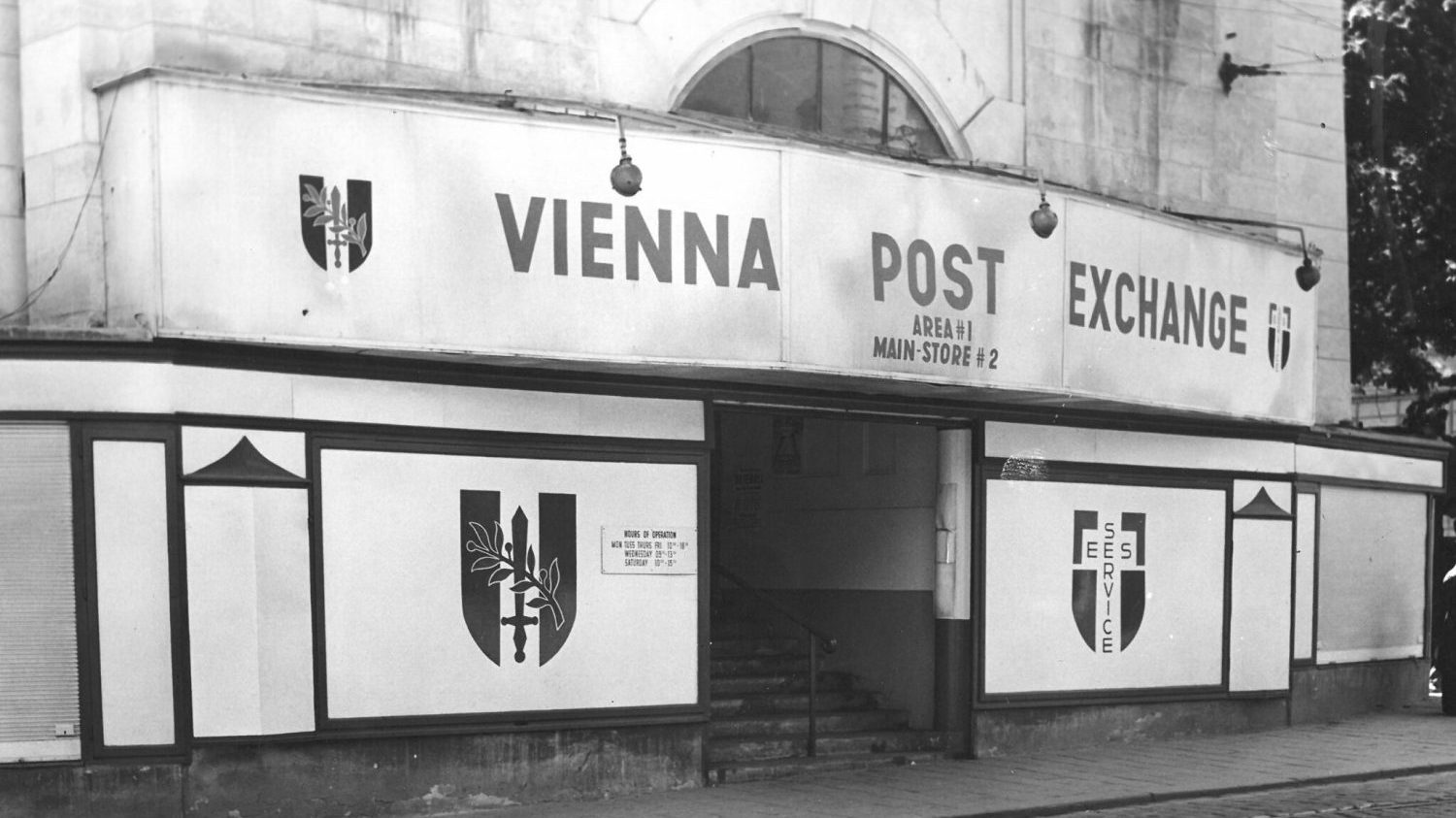#FlashbackFriday: Some Snapshots of the Exchange in Europe During and After WWII

Although the Exchange had operations in Europe during the early days of World War II, the organization that most closely resembles today’s Exchange in Europe was born on April 24, 1943—80 years ago this month—when the Army Exchange Service opened a London office (at least one source gives the date as May 1, but it’s still 80 years ago).
A workforce consisting of Americans, Western Europeans and more endeavored to provide the comforts of home to American troops based in Europe. This often meant providing support within sight of combat.
“The Exchange sweltered with GIs in North Africa, took part in the invasion of Italy, stormed ashore at Normandy and froze with those who fought what has become known as the Battle of the Bulge,” said a 1979 Exchange Post article looking back on the Exchange’s history on the continent.

In this 1944 photo, troops buy food at a World War II mobile field exchange in Slapton Sands, England. During World War II, Exchanges often operated out of the back of a truck or tent, frequently within sight of battles.
These Exchanges often operated out of a tent or the back of a truck, offering razor blades, candy and beverages to troops. Paperback novels, especially detective stories, were also popular. In North Africa, stores were even set up in public swimming pools damaged by bombs, vacant houses and buildings once occupied by five-and-ten-cent stores.
Brig Gen. Joseph W. Byron, chief of the AES from August 1942 to November 1943, led the organization through a massive expansion to serve American forces serving in World War II.
“There is something in the little extras the Soldier can buy that [is] very important to him,” Byron, told The New York Times in May 1943. “He gets a lift just out of seeing [a] familiar American label.”

An Exchange in Tunisia during World War II. Exchanges in North Africa were also set up in public swimming pools damaged by bombs, vacant houses and buildings once occupied by five-and-ten-cent stores.
When Paris was liberated in August 1944, the AES set up headquarters in the Majestic Hotel in Paris. A quarter-century later, the hotel would be the site of Vietnam peace talks. Paris’ Au Printemps department store was converted into an Exchange that sold jewelry, silks, perfume and more.
After the war, the AES headquarters moved to Hoechst, Germany, in early 1946.
“Hoechst, center for much of the IG Farben industrial empire of the Hitler era, and a suburb of Frankfurt, was a locale generally spared the horrors of the war,” according to “A History of the Exchange in Europe, 1943 – 1970.” “It was into those very Farben buildings that the Exchange moved.”
In 1948, AES’ Europe headquarters moved to Bad Neuheim. A year later, it moved again, to Nuernberg’s Palace of Justice, where it would remain for 20 years. Current headquarters is in Sembach, Germany.
The Exchange maintains a strong presence in Europe, where it has stores in more than a dozen countries, including Poland, Bulgaria, Norway and more. The Kaiserslautern Military Community Center (KMCC) in Germany is the largest US military Exchange in Europe and serves a community exceeding 53,000 customers.

When American, Russian, British and French forces occupied Austria in 1945 after World War II, this former movie theater became a PX. The Army & Air Force Exchange Service operated it until 1957, when the occupation ended.
Sources: Exchange Post archives; “One Hundred Years of Service: A History of the Army and Air Force Exchange Service”; Exchange History on Flickr; The New York Times: The U.S. Army in Germany (www.usarmygermany.com)


Thank you for sharing these amazing images of our human history.
Thanks, Andrelle. Appreciate the comment.
Vr,
Robert Philpot
The Exchange Post
I really enjoy reading this on Friday.
Thanks for the kind words, Lorraine. Turns out they’re also fun to research and write.
Vr,
Robert Philpot
The Exchange Post